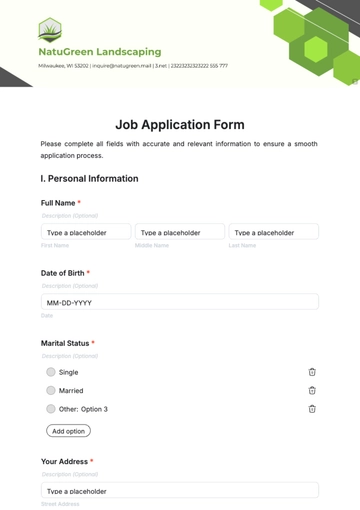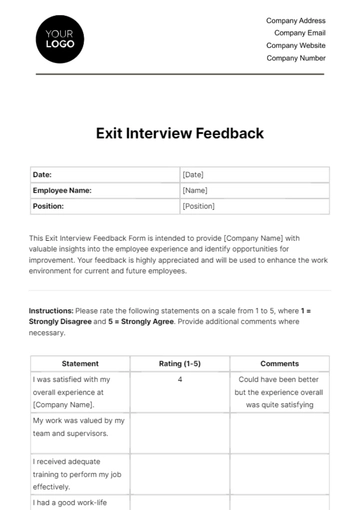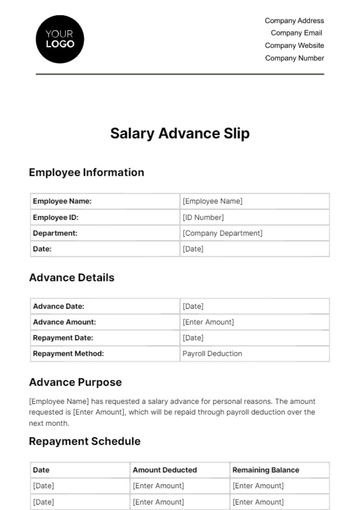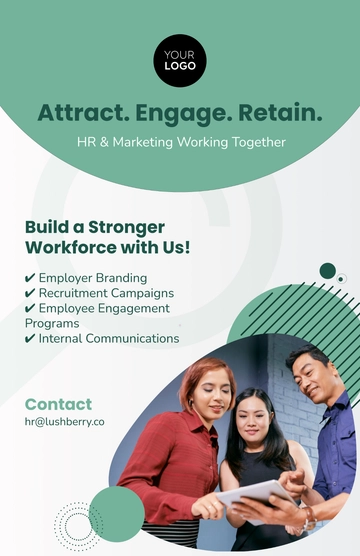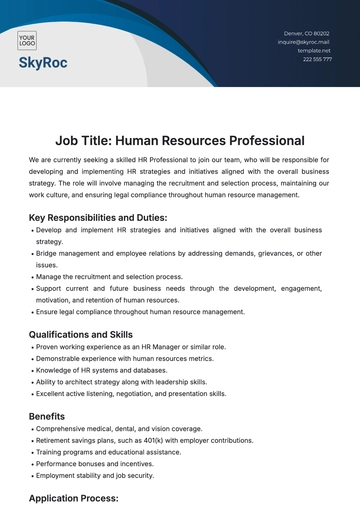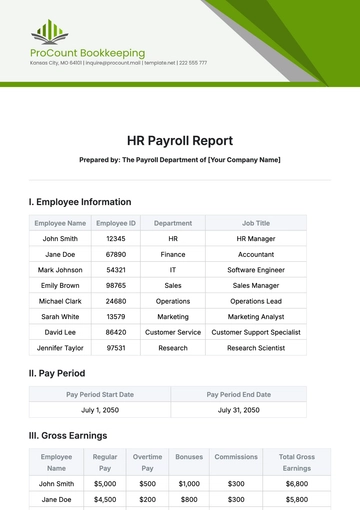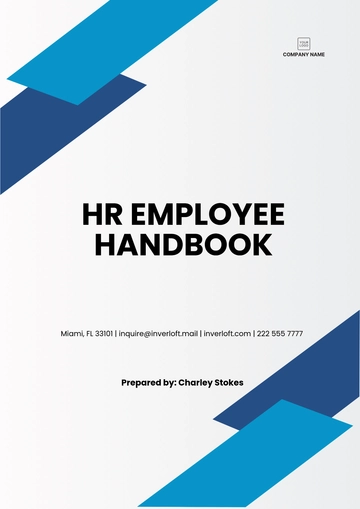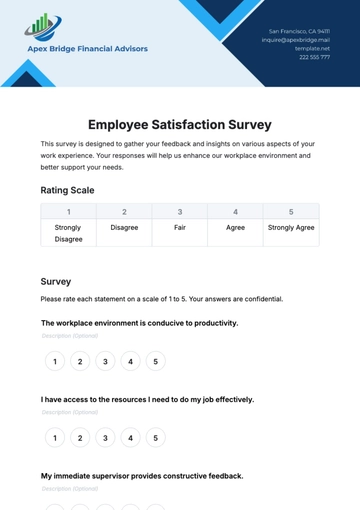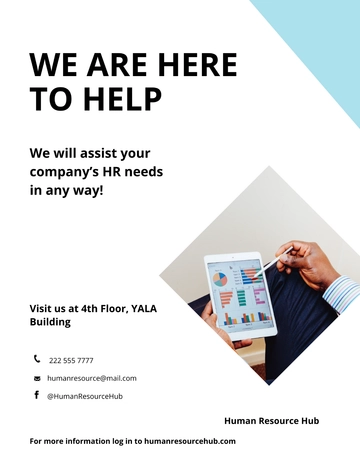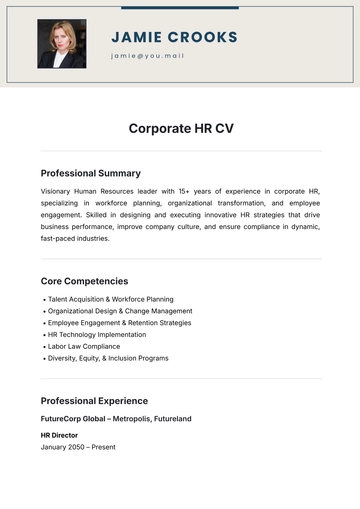Free Workplace Health & Safety Orientation HR

Table of Contents
I. Introduction to Workplace Health & Safety.............................................................. 2
II. Workplace Hazards and Risks.................................................................................. 3
III. Safety Policies and Procedures............................................................................... 4
IV. Personal Protective Equipment (PPE)..................................................................... 6
V. Safety Training and Education.................................................................................. 7
VI. Safety Communication and Reporting................................................................... 9
VII. Health & Wellness Programs................................................................................. 10
Introduction to Workplace Health & Safety
Welcome to [Company Name] , where your well-being is our foremost concern. In this section, we embark on a journey to explore the profound significance of workplace health and safety. Beyond the immediate implications, we delve into how these aspects reverberate throughout your professional life and echo in the corridors of personal health and well-being.
The Impact of Workplace Health & Safety
A safe and healthy work environment is not merely a checkbox on our list of priorities at [Company Name]; it is the cornerstone of our commitment to our employees. It serves as the bedrock upon which your professional endeavors are built and, perhaps even more importantly, as the scaffolding supporting your personal health and happiness.
Let's underscore this with data and insights:
According to the U.S. Bureau of Labor Statistics, in 2020, there were approximately 2.8 million non-fatal workplace injuries and illnesses reported by private industry employers. Workplace safety measures aim to reduce such incidents. |
A study by the National Institute for Occupational Safety and Health (NIOSH) revealed that a positive workplace safety climate is associated with higher job satisfaction and lower stress levels among employees. |
[Company Name]’s Commitment to Employee Well-being
Our commitment to workplace health and safety isn't a mere platitude—it's a guiding principle etched into our organizational DNA. We understand that a safe workplace isn't just a legal requirement; it's the fertile ground from which happier and more productive IT professionals emerge.
Here's a glimpse of our dedication in action:
● We invest in state-of-the-art safety training programs, ensuring that our employees are well-prepared to navigate potential hazards.
● [Company Name] has consistently maintained a safety record that exceeds industry standards, a testament to our unwavering commitment to your well-being.
Legal and Regulatory Framework in the IT Industry
In the dynamic landscape of the IT industry, it's imperative to be well-versed in the legal and regulatory framework governing workplace health and safety. We prioritize compliance with these guidelines and obligations to ensure a secure working environment.
Let's bring clarity to this aspect:
The Occupational Safety and Health Administration (OSHA) has specific guidelines for the IT industry, focusing on ergonomics, electrical safety, and the prevention of workplace violence. |
A comprehensive study conducted by Deloitte in 2019 highlighted that companies that invest in complying with industry-specific regulations experience fewer workplace incidents and lower associated costs. |
In conclusion, workplace health and safety at [Company Name] isn't a mere formality; it's a foundational commitment that ripples through your professional and personal life. By understanding its profound importance, our unwavering dedication, and the legal landscape that guides us, you'll be well-equipped to thrive in an environment that values your safety and well-being above all else. Subsequent sections will provide practical insights and tools to put this commitment into action.
Workplace Hazards and Risks
In this section, we take a closer look at the distinct hazards that IT professionals may encounter within the dynamic landscape of the IT sector. These hazards, which include ergonomic issues, electrical safety concerns, and the ever-present threat of cybersecurity breaches, require a heightened level of awareness and vigilance.
Ergonomic Issues in the IT Sector |
Ergonomic hazards are pervasive in the IT sector due to prolonged computer usage. Prolonged periods of sitting and repetitive tasks can lead to musculoskeletal disorders, impacting your long-term well-being. Research published in the Journal of Occupational and Environmental Medicine in 2019 highlighted that ergonomics-related issues are one of the leading causes of work-related injuries. Understanding these issues is the first step toward mitigating them. |
Electrical Safety in IT |
The IT environment often involves complex electrical systems and equipment. Mishandling electrical components can lead to accidents, including electrical shocks and fires. A study by the National Fire Protection Association (NFPA) in 2020 revealed that electrical malfunctions were a leading cause of workplace fires. It is essential to comprehend the principles of electrical safety to protect both yourself and your colleagues. |
Cybersecurity Threats |
In the digital age, cybersecurity is paramount. IT professionals often deal with sensitive data and systems that are attractive targets for cyberattacks. Verizon's 2021 Data Breach Investigations Report found that 85% of data breaches involve the human element. Understanding cybersecurity threats is crucial for maintaining the security and integrity of IT systems. |
Understanding Risk Assessment for IT Professionals
Risk assessment is a vital skill for IT professionals. Learn how to assess risks in the IT environment and take proactive measures to minimize them.
Risk assessment involves identifying potential hazards, evaluating their impact, and implementing measures to control and mitigate risks. IT professionals must be adept at this process to ensure a safe working environment. The Society for Risk Analysis reported in 2018 that organizations that prioritize risk assessment tend to experience fewer workplace incidents.
Reporting Hazards and Near Misses: Your Responsibility
Discover the importance of reporting workplace hazards and near misses promptly. Your input is crucial in maintaining a safe and secure IT workspace.
Your vigilance in reporting hazards and near misses plays a pivotal role in our collective effort to maintain a safe and secure IT workspace. A report by the Health and Safety Executive (HSE) in 2020 emphasized that timely reporting of near misses can lead to proactive hazard mitigation and prevent future incidents.
Understanding workplace hazards and risks specific to the IT sector is essential for your safety and that of your colleagues. By recognizing ergonomic issues, understanding electrical safety, and being vigilant against cybersecurity threats, you'll be well-prepared to navigate potential hazards. Equally important is your role in risk assessment and promptly reporting hazards and near misses, contributing to a safer IT workspace for all. Subsequent sections will provide practical guidance on addressing and mitigating these hazards effectively.
Safety Policies and Procedures
At [Company Name], we pride ourselves on a commitment to comprehensive health and safety policies. These policies serve as the guiding pillars, shaping our collective approach toward fostering a secure and thriving work environment. In this section, we delve deeper into the intricacies of these policies and their pivotal role in steering your actions and decisions.
Understanding the Foundation: Workplace Health & Safety Policies
Our workplace health and safety policies form the bedrock of our commitment to your well-being. These meticulously crafted policies encompass a spectrum of areas, ranging from ergonomic guidelines to cybersecurity protocols. Their purpose extends beyond a mere set of rules; they serve as a compass directing your actions and decisions toward ensuring a secure work environment.
Emergency Response Procedures for IT Incidents
In the event of IT emergencies know the procedures to follow to safeguard your well-being and the integrity of our IT operations. Quick and decisive actions are essential.
In the dynamic IT landscape, unforeseen incidents can occur. When they do, your ability to respond swiftly and effectively is paramount. This section equips you with a clear understanding of the emergency response procedures specific to IT incidents. Timely and decisive actions can mitigate risks and safeguard both your well-being and the continuity of our IT operations.
Safe Work Practices and Procedures in IT Operations
Learn best practices and procedures specific to IT tasks and projects. Safe work practices are essential for your safety and the quality of our IT services.
IT tasks and projects often involve intricate processes and technologies. Adhering to safe work practices and procedures isn't merely a formality; it is the cornerstone of your safety and the quality of the IT services we provide. This section provides you with insights into industry-specific best practices, ensuring that you navigate your IT responsibilities with precision and security.
At [Company Name], safety policies and procedures are not just words on paper; they are our unwavering commitment to your well-being and the integrity of our operations. By comprehending the foundation of our policies, understanding emergency response procedures, and embracing safe work practices, you become an integral part of our collective effort to maintain a secure and thriving IT workspace. Subsequent sections offer practical guidance on putting these policies and procedures into action effectively.
Personal Protective Equipment (PPE)
In this section, we delve into the essential realm of Personal Protective Equipment (PPE) as it pertains to IT professionals. PPE represents a vital line of defense in safeguarding your well-being while undertaking IT tasks. It encompasses a range of specialized tools and accessories, each meticulously designed to mitigate specific workplace hazards.
The Vital Role of PPE in IT
Personal Protective Equipment, or PPE, is your silent yet indispensable ally in the IT realm. As an IT professional, your tasks often involve unique risks, including exposure to electrical hazards, ergonomic strains, and even potential cybersecurity threats. Understanding the types of PPE relevant to your role is the first step in ensuring your safety and the integrity of our IT operations.
1. Types of PPE for IT Professionals
Anti-Static Wristbands: These unassuming accessories are your safeguard against static electricity, a common hazard in IT. They prevent electrostatic discharge that could harm sensitive electronic components. A study in the Journal of Electrostatics (2020) highlighted the effectiveness of anti-static measures in preventing costly electronic damage. |
Safety Glasses: The eyes are a precious asset, especially in the IT world. Safety glasses protect your vision from potential hazards like debris, chemicals, and optical radiation from screens and equipment. According to the Occupational Safety and Health Administration (OSHA), eye injuries cost an estimated $300 million annually. |
Ergonomic Accessories: Ergonomic accessories, such as adjustable chairs, keyboard trays, and monitor stands, promote your physical well-being. Proper ergonomics are linked to increased productivity and reduced musculoskeletal disorders, as reported in the Journal of Occupational Rehabilitation (2018). |
2. Proper Selection, Use, and Maintenance of PPE
Understand how to select, use, and maintain PPE correctly. Your safety depends on using these tools effectively and keeping them in good condition.
Selecting, using, and maintaining PPE are essential skills for an IT professional. Your safety and the efficacy of these tools hinge on your ability to handle them correctly.
Selecting PPE: Choosing the right PPE begins with a thorough understanding of your specific tasks and the associated hazards. PPE should be chosen based on these factors to provide adequate protection. |
Using PPE: Wearing PPE correctly is as crucial as selecting the right equipment. Proper fit and use are essential to ensure maximum protection. |
Maintaining PPE: Regular maintenance ensures that PPE remains effective. Inspections, cleaning, and replacement when necessary contribute to the longevity of these tools. |
3. PPE Training and Compliance: Keeping IT Workers Safe
Learn about the training required for using PPE in IT operations and the importance of compliance. Proper PPE usage ensures that you remain protected while performing your IT tasks.
Training and compliance play a pivotal role in the effective use of PPE. Without proper knowledge and adherence to guidelines, the protective value of PPE diminishes.
Training Requirements: Understanding how to use PPE is not intuitive. Proper training is essential to ensure that you can utilize these tools effectively. Research published in Safety Science (2019) underscores the positive impact of training on PPE compliance. |
Importance of Compliance: Compliance with PPE guidelines is not a mere formality but a commitment to your safety. Non-compliance can lead to accidents and injuries, as indicated by a report from the National Safety Council (2021). |
In conclusion, Personal Protective Equipment is your silent guardian in the realm of IT. Understanding the types of PPE relevant to your role, using them correctly, and complying with guidelines ensure your safety while performing IT tasks. This section equips you with the knowledge and tools necessary to embrace PPE effectively. Subsequent sections offer practical guidance on integrating PPE into your daily IT operations.
Safety Training and Education
In this section, we delve into the pivotal role of safety training and education for IT professionals. At [Company Name], your well-being is our top priority, and these programs are designed to empower you with the knowledge and skills necessary to navigate the complex landscape of IT safely and effectively.
Mandatory Safety Training Programs for IT Employees
[Company Name] offers mandatory safety training programs tailored to IT professionals. These programs equip you with the knowledge and skills necessary for safe IT work.
Safety training is not just a checkbox; it's a cornerstone of our commitment to your safety. Our mandatory safety training programs are meticulously crafted to address the unique challenges and hazards that IT professionals may encounter. They are designed to equip you with the knowledge and practical skills required to perform your IT tasks safely.
On-the-Job Safety Education: Applying Knowledge in IT Projects
Put your safety knowledge into practice as you work on IT projects. Apply what you've learned to make informed decisions and mitigate risks effectively.
Safety knowledge is most valuable when applied in real-world scenarios. As you engage in IT projects, you'll have the opportunity to put your safety education into practice. This involves making informed decisions, identifying potential risks, and taking proactive measures to mitigate them. This practical application is a crucial aspect of ensuring a secure IT workspace.
Continuous Learning and Updates in IT Safety Practices
Stay updated with the latest safety practices in the IT industry. [Company Name] encourages continuous learning and provides resources to keep your knowledge current.
The IT industry is dynamic, with evolving technologies and emerging risks. Staying up-to-date with the latest safety practices is essential. [Company Name] fosters a culture of continuous learning, providing resources and opportunities for ongoing education in IT safety practices. By staying current, you enhance your ability to adapt to new challenges and maintain a safe work environment.
Training Matrix
Course Name | Duration | Frequency |
IT Safety Fundamentals | 1 day | Annually |
Cybersecurity Awareness | 2 hours | Bi-Annually |
Ergonomics in IT | 3 hours | Once Every 2 Years |
First Aid and CPR | 8 hours | Once Every 2 Years |
Fire Safety | 1 hour | Annually |
Safety training and education are not just formalities; they are essential components of our commitment to your safety and professional growth. Mandatory safety training equips you with essential knowledge and skills, while on-the-job safety education puts that knowledge into practice. Embracing continuous learning ensures that you remain well-prepared to navigate the ever-evolving landscape of IT safely and effectively. Subsequent sections offer practical insights into applying safety knowledge in your daily IT operations.
Safety Communication and Reporting
In this section, we explore the vital aspects of safety communication and reporting within [Company Name]. Effective communication and prompt reporting are the linchpins of our commitment to a secure IT workspace, ensuring that issues are addressed promptly and that your well-being remains paramount.
Reporting IT Incidents, Injuries, and Near Misses
Know the process for reporting IT incidents, injuries, and near misses. Timely reporting is crucial for addressing issues promptly and preventing future incidents.
Reporting incidents and near misses is not just a formality; it's a proactive step toward preventing future incidents. This section acquaints you with the essential process for reporting IT incidents, injuries, and near misses. Timely reporting ensures that issues are addressed promptly, mitigating risks and preserving the safety of our IT workspace.
Safety Communication Channels within [Company Name]
Familiarize yourself with the various communication channels for safety-related matters within [Company Name]. Effective communication ensures that safety concerns are addressed promptly.
Effective safety communication relies on accessible channels that enable swift responses. Within [Company Name], a range of communication avenues is in place to facilitate the seamless flow of safety-related information. Familiarizing yourself with these channels ensures that safety concerns are not only heard but also acted upon swiftly, contributing to a secure IT workspace.
Employee Involvement in IT Safety and Suggestions
We value your input and encourage you to actively participate in IT safety initiatives. Share your ideas and suggestions to enhance our safety practices.
At [Company Name], we believe that safety is a collective responsibility. Your active involvement in IT safety initiatives is not only encouraged but highly valued. We recognize that your insights and suggestions can further strengthen our safety practices. This section invites you to contribute your ideas, share your experiences, and actively engage in shaping our safety culture.
Safety communication and reporting are not mere protocols but the lifelines of our commitment to your well-being. Understanding the reporting process, familiarizing yourself with communication channels, and actively participating in safety initiatives are integral to preserving a secure IT workspace. Subsequent sections provide practical guidance on implementing these principles in your daily IT operations, ensuring that safety remains at the forefront of our endeavors.
Health & Wellness Programs
In this section, we delve into the pivotal role of health and wellness programs at [Company Name] Our commitment to your well-being extends beyond the workplace, encompassing programs designed to nurture your physical and mental health.
Overview of Health & Wellness Initiatives at [Company Name]
Explore the health and wellness programs available to [Company Name] employees. These initiatives are designed to promote physical and mental well-being.
At [Company Name], we recognize that your health is the foundation upon which your professional success is built. Our health and wellness initiatives are meticulously crafted to address both the physical and mental aspects of well-being. This section provides an overview of these programs, offering you insights into the resources available to enhance your overall health.
Promoting a Healthy Work Environment for IT Professionals
Discover how [Company Name] promotes a healthy work environment for IT professionals, including ergonomic workspaces, stress management resources, and work-life balance support.
A healthy work environment is not just a concept; it's a tangible commitment at [Company Name] As an IT professional, you'll find that our dedication to your well-being is reflected in every aspect of your work life. From ergonomically designed workspaces that support your physical health to stress management resources that nurture your mental well-being, we are here to ensure that your work environment is conducive to both productivity and personal health.
Resources for IT Employee Well-being: Physical and Mental Health
Access resources and support services that cater to your physical and mental health needs. [Company Name] cares about your overall well-being and offers assistance when needed.
Your well-being is our priority. In this section, you'll discover a wealth of resources and support services tailored to address your physical and mental health needs. Whether it's access to fitness programs, mental health counseling, or work-life balance support, [Company Name] is committed to ensuring that you have the tools and assistance required to thrive both personally and professionally.
In conclusion, health and wellness programs at [Company Name] are not mere offerings; they are an embodiment of our commitment to your holistic well-being. These initiatives are designed to nurture your physical and mental health, creating a work environment where you can excel and lead a fulfilling life. Subsequent sections provide practical insights into integrating these programs into your daily routine, ensuring that your well-being remains at the forefront of our endeavors.
- 100% Customizable, free editor
- Access 1 Million+ Templates, photo’s & graphics
- Download or share as a template
- Click and replace photos, graphics, text, backgrounds
- Resize, crop, AI write & more
- Access advanced editor
Welcome to the forefront of workplace safety! Explore our meticulously crafted Workplace Health & Safety Orientation HR Template at Template.net. Elevate your onboarding process with editable and customizable documents, ensuring a seamless integration of safety protocols. Use our innovative AI Editor Tool to tailor templates to your specific needs. Your journey to a safer workplace begins here. Template.Net – Where Safety Meets Simplicity.



